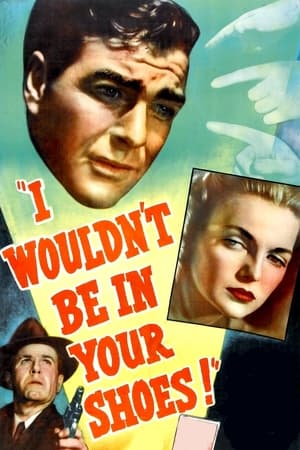
I Wouldn't Be in Your Shoes
James M. Cain, Dashiell Hammett, Raymond Chandler, and Cornell Woolrich. All were great noir writers but Woolrich is mostly forgotten by readers today. All have had many of their stories adapted in Hollywood. In fact, Woolrich may have had more films made from his stories and novels than any one of the others. Of course, the Blackboard regulars and mystery readers know him well. The writer of “Rear Window” lived a hard life. He suffered from depression and apparently lived a sad, lonely life. If Woolrich lived today, he probably could have been treated for the depression and alcoholism that beat him later in life. But could a happy Woolrich write the dark Fear in the Night or Phantom Lady? Probably not. Want to know how dark this guy was? In an afterword to “The Fantastic Stories of Cornell Woolrich” the writer is quoted: “Life is death. Death is life. To hold your one true love in your arms and to see the skeleton she will become; to know that your love leads to death, that death is all there is, that is what I know and what I do not want to know and what I cannot bear.” I recently got my hands on “I Wouldn’t Be in Your Shoes,” another one of Woolrich’s unremitting nightmares turned into a very entertaining B-film. It’s interesting to see how dark this film is, even with an ending that is unsurprisingly upbeat. There will be spoilers ahead. The film starts with the title card of the film over the shadow of a nose swinging. Dangling from the rope is a pair of shoes. The shoes play a big part in the film. A young married couple is living together in a tiny one-room apartment in New York City. They both have dreams of making it big as dancers but lately they haven’t been able to get a break. The wife works at a dancing school at night, where she dances with lonely men for tips. The husband pounds the pavement every day looking for dancing work but not finding any. Making matters worse, the man is worried about his wife staying out all hours of the night with the guys at the dance school. I guess the “Ortiz Dance School” is the 40’s equivalent of a “Gentleman’s Club” today. The woman flirt with the men and the men walk out of the place with a smile on their face, perfume on their clothes, and a pound lighter in the wallet. Tom gets hotter and hotter as he waits for his wife Ann to return one night. When she finally does, she tells him she stayed to talk to “Santa Claus”’; a man who tips her well at the place. The dancing couple eventually makes up and goes to bed. Just as the lights go out, cats in the alley below begin to howl. Tom, a little drunk, throws his shoes down at them to shut them up. His wife tells him it’s his last pair of shoes – his tap shoes- and that he must go down now and get them. He goes out to get them but doesn’t find the shoes. In the morning, the shoes are at their doorstep. Happy that he can go out with a pair of shoes, the incident is forgotten. This then leads to Tom getting arrested for murder when the cops find a shoe print of his by a recently found dead body. Tom is tried and convicted. He’s sentenced to death “the Tuesday after Christmas.” So while the rest of the world is celebrating the holiday season, Ann counts down the days to Christmas… and to the day her husband will be killed. Finally, out of desperation Christmas Eve, Ann offers herself to “Santa Claus” – who also turns out to be one of the policemen that arrested her husband- in an attempt to get him to find the real killer. Ann promises to marry Judd if he can get Tom released. They seal the pact with a kiss. Actors Don Castle and Elyse Knox play Tom and Ann in the film, but the real star is third-billed Regis Toomey as the obsessive Judd. Usually when you see Toomey in a film he plays a straight-as-an-arrow cop, so when he turns out to be Ann’s creepy “Santa Claus” –and later even more- boy was I surprised. This is a treat of a film. The mystery story, at first confusing and unbelievable, turns out to be logical and clever. The film was directed by William Nigh, who knocked out a large amount of films in the 1930s including a handful of Mr. Wong mysteries. Nigh’s direction is stagy but some of the outdoor scenes, especially when Ann meets Judd at night by flashlight, have a shadowy film-noir look. There are some nice supporting players in the film too. Look out for Charles D. Brown, Esther Michelson (her only credited screen role as the nice Jewish lady who gives Ann a tiny Christmas tree), and everyone’s favorite Tito Vuolo.
